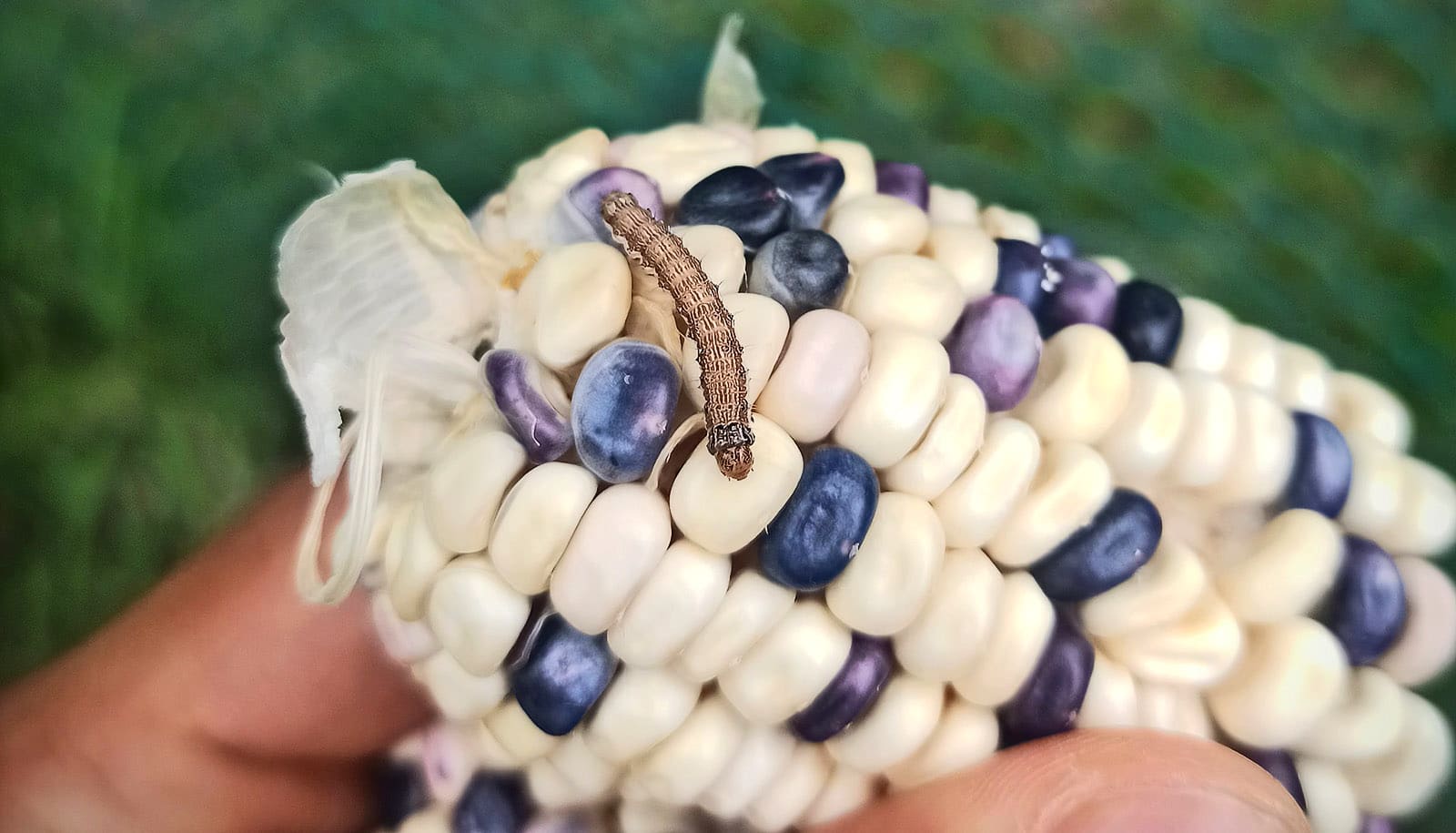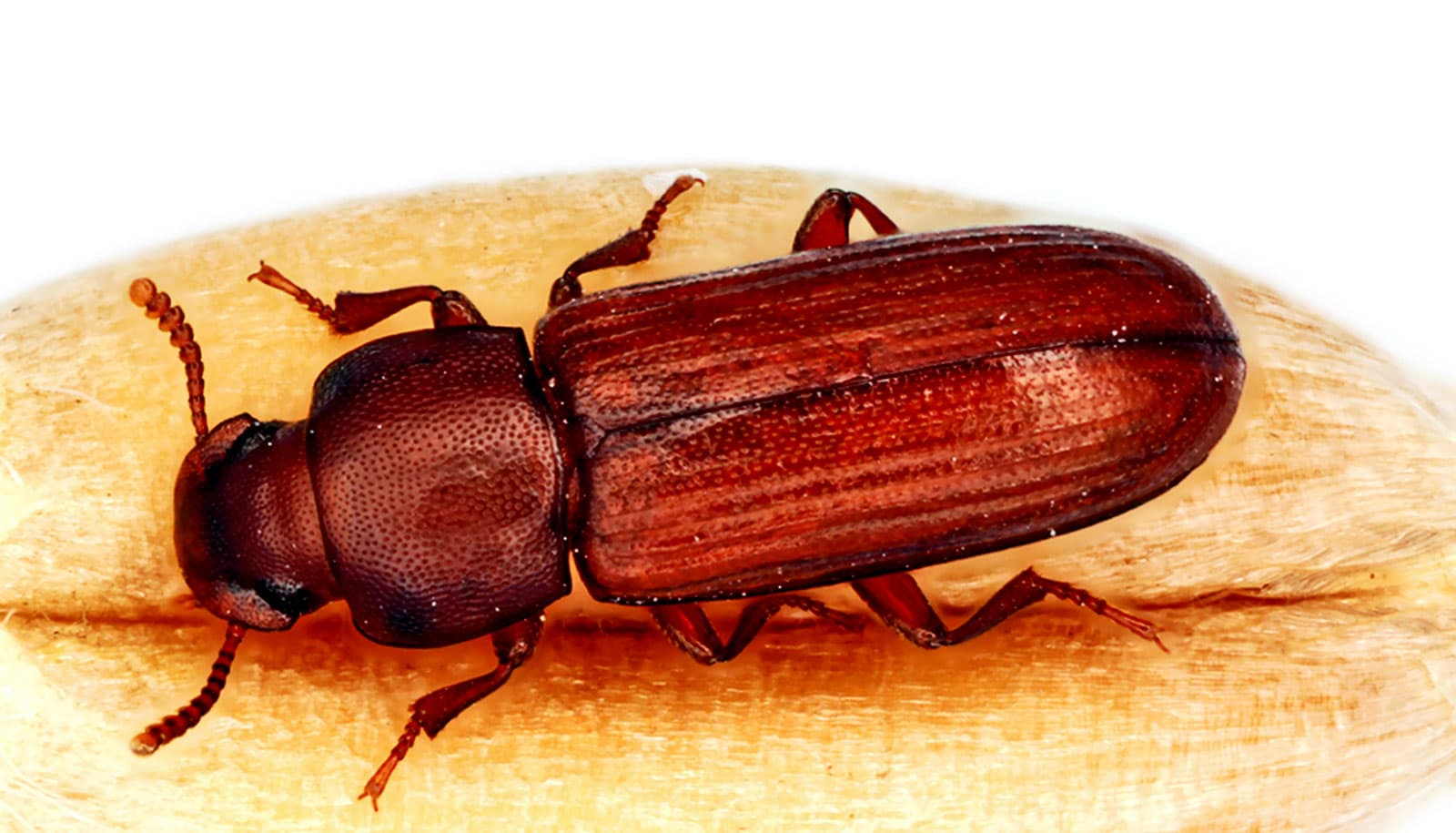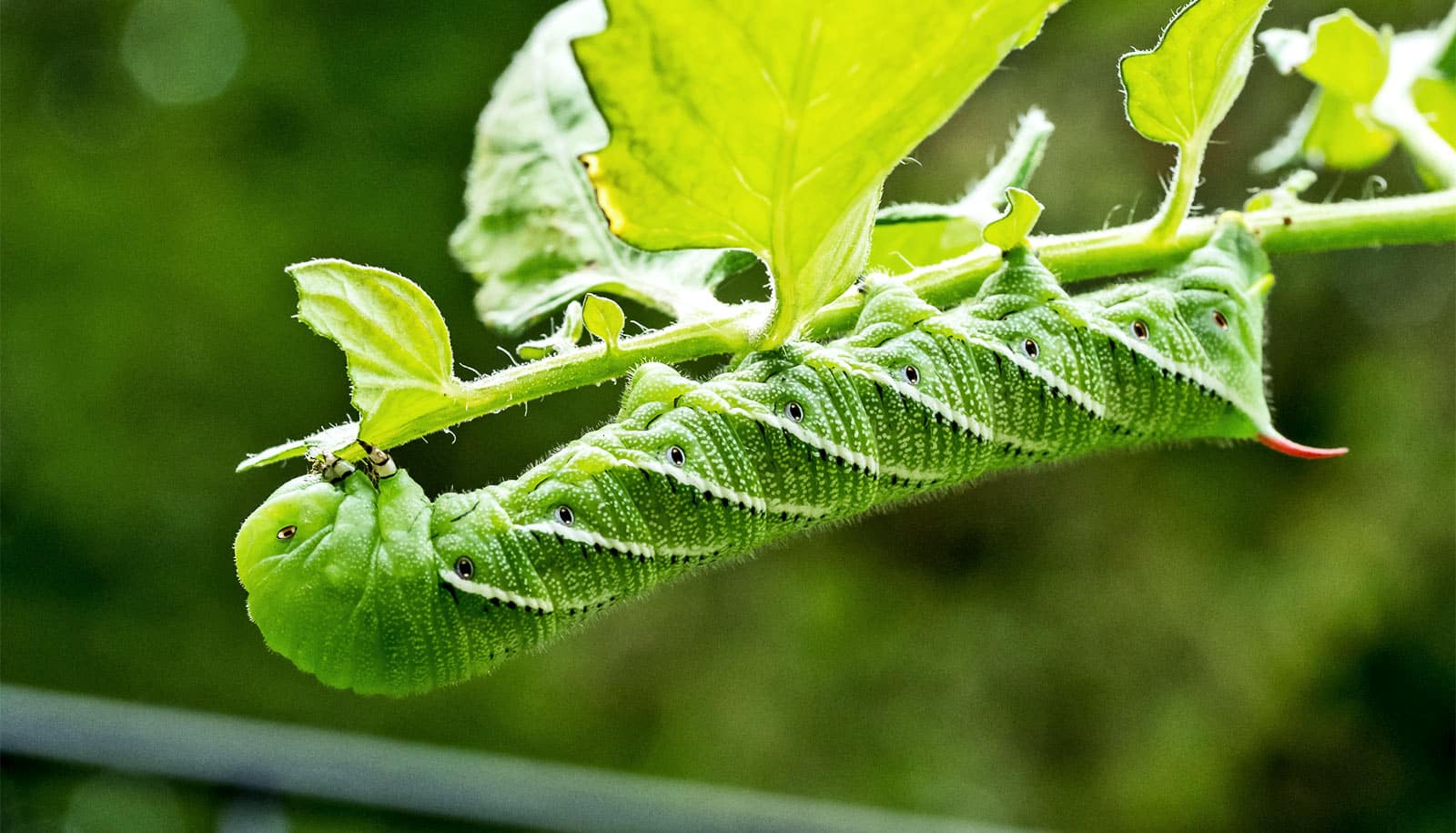Soil temperature can effectively monitor and predict the spread of the corn earworm, a pest that ravages corn, cotton, soybeans, peppers, tomatoes, and other vegetable crops, a new study shows.
The ability to better monitor the pest and make predictions about where it will appear could help farmers control the pest more effectively, which would reduce the financial and environmental impacts of pesticide use.
For the study in the Proceedings of the National Academy of Sciences, the researchers combined historical soil temperature data with long-term corn earworm monitoring data and information on how the pest survives cold conditions in a lab setting to better understand “overwintering success,” or how well the pest can survive underground during the colder winter months.
Greater overwintering success can expand the areas where the pest can live and thrive, as the pest can migrate long distances, the researchers say. Generally, greater overwintering success in more northern latitudes increases the potential for crop damage from this pest further north. Climate change also affects overwintering success.
“There is a preconceived notion that pests have little overwintering success north of 40 degrees latitude,” says Douglas Lawton, a former postdoctoral researcher at North Carolina State University and co-corresponding author of the paper.
“That may have been true in the 1930s, but now we have more data-guided evidence to ask and answer the question, ‘Where can this species actually overwinter?'”
The research shows that 40 degrees latitude is not the best division for overwintering success, so much so that the researchers devised their own maps—overlaying the three different data sets—to show three relevant geographic zones: a “Southern Range” where pests survive over the winter months, a “Northern Limits” area where pests are generally unable to survive during winter months, and a “Transitional Zone” in between the northern and southern areas where pests may or may not survive over the winter.
“These areas are biologically relevant and supported through studies in the lab and the academic literature,” Lawton says.
The researchers used the three zones to show historical trends for the corn earworm and then used a model to make predictions about pest spread extending to the end of the century. Strikingly, the Southern Range grew by 3% since 1981. The models suggest the Southern Range will double in size by the end of the century and shift well to the north, with the other two zones shrinking.
“As the climate changes, the overwintering zones are likely to shift northward,” says Anders Huseth, assistant professor of entomology and the paper’s other co-corresponding author.
Minnesota, with its harsh winters, saw no corn earworm overwintering success from 1950 through 2021, the data show. By the end of the century, however, the predictive models show the entire state firmly in the Transitional Zone.
“This is the canary in the coal mine for agricultural pests,” Huseth says. “Making sense of what’s taking place with this pest is really important for agricultural producers.
“We’ve shown here the element of uncertainty that can have demonstrable effects on farmers and potentially new opportunities for pesticide resistance selection. Our models visualize that change and provide touchstones for pest management.
“Now we’d like to come up with a better forecasting tool for this pest, along with a risk-prediction model, in order to give growers better information about pest spread. Success here could reduce both costs for farmers and pesticide into the environment.”
The US Department of Agriculture’s Crop Protection and Pest Management grant and Biotechnology Risk Assessment grant supported the work.
Source: NC State


